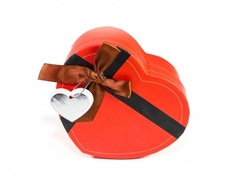 Christmas is for love. It is for joy, for giving and for sharing, for laughter, for reuniting with family and old friends, for tinsel and brightly decorated packages. But mostly it is for love. I had not believed this until a small elf-like student with wide, innocent eyes and soft rosy cheeks gave me a wondrous gift one Christmas. Mark was an 11-year-old orphan who lived with his aunt—a bitter middle-aged woman greatly annoyed with the burden of caring for her dead sister’s small son. She never failed to remind young Mark that, but for her generosity, he would be a vagrant homeless waif. Still, with all the scolding and chilliness at home, he was a sweet and gentle child. I had not noticed Mark particularly until he began staying after class each day (at the risk of arousing his aunt’s anger, I later found) to help me straighten up the classroom. We did this quietly and comfortably, not speaking much, but enjoying the solitude for that hour of the day. When we did talk, Mark spoke mostly about his mother. Though he was quite small when she died, he remembered a kind, gentle, loving woman, who always spent much time with him. As Christmas grew nearer, however, Mark failed to stay after school each day. I looked forward to his coming, and when, as the days passed, he continued to scamper hurriedly from the room after class, I stopped him one afternoon and asked why he no longer helped me in the room. “I miss being with you, Mark. Is something wrong at home?” Those large gray eyes eagerly lit up. “Did you really miss me?” “Yes, of course. You’re my best helper.” “I was making you a surprise for Christmas,” he whispered confidentially. With that, he became embarrassed and dashed from the room. He didn’t stay after school anymore after that. Finally came the last day of school before the holidays. Mark crept slowly into the room late that afternoon with his hands concealing something behind his back. “I have your present,” He said timidly when I looked up. “I hope you like it.” He held out his hands, and there lying in his small palm was a tiny wooden chest. “It’s beautiful, Mark. Is there something in it?” I asked, opening the top and looking in. “Oh, you can’t see what’s in it,” he replied, “and you can’t touch it or taste it, but Mother always said it makes you feel good all the time, and warm on cold nights, and safe when you’re all alone.” I gazed into the empty box. “What is it, Mark?” I asked gently. “What will make me feel so good?” “It’s love,” he whispered softly,” and Mother always said it’s best when you give it away.” And he turned and quietly left the room. So now I keep a small toy chest, crudely made of scraps of wood, on the piano in my living room, and only smile as inquiring friends raise quizzical eyebrows when I explain to them there is love in it. Yes, Christmas is for gaiety and mirth and song, for rich food and wondrous gifts. But mostly, Christmas is for love.—Laurie Courtesy of www.anchor.tfionline.com.
0 Comments
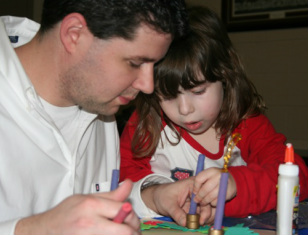 Christmas Games * Christmas A–Z praise. The first person thanks God for something that starts with “A,” which has to do with Christmas. The next person thanks God for something that starts with “B,” etc. See how far into the alphabet the children can go with their praises. * Wrap a scarf around your child’s eyes, so that he can’t see, and then have him draw something related to Christmas on a piece of paper (e.g., the manger scene, Joseph and Mary, the wise men, etc.). After each child finishes drawing his or her picture, have the other children guess what it is. * Play “Who Am I?” using only Christmas-related people and/or objects. A person thinks of a character or thing related to Christmas, and other players ask questions which can only be answered with a “yes” or “no,” and tries to guess from the information gathered who or what the person or object is. * Choose a Christmas word such as, “Christmas,” “caroling,” “nativity,” etc. Write the letters of the word you chose on little pieces of paper, then make two sets and put each word in an individual bag or bowl. Divide the children into teams. Give each team a set. The first team to decipher the word in the bag wins. * Divide the children into two teams. Prepare a list of five Christmas song titles. Each team sends up a representative who is shown a piece of paper with the name of a Christmas carol on it. That person returns to the group and needs to illustrate the title of the Christmas carol. No talking, gestures, or alphabet letters are allowed. As soon as a team has guessed the song, they must sing it as loud as they can. After singing, they send a new person for another song. Play continues until one group has guessed all five song titles. You will need pen and paper for each team. If your team is very large, you may need a white or blackboard, or a large piece of paper to draw on. Christmas Activities * Draw a simple, poster-size Christmas tree. Cut out circles and different shapes from colored construction paper to use as ornaments for the tree. The children can write short sentences of the things they enjoy about Christmas on the ornaments. Glue the ornaments on the tree and post it in a communal area. * Get a large piece of cardstock, title it “[your child’s name]’s Christmas To-do List” (e.g., “Jane’s Christmas To-do List”). Have your child draw a series of pictures illustrating what he or she would like to do to bring happiness to others this Christmas. Glue these pictures on to your child’s “To-do List” cardstock. Once all the pictures are added to the poster, decorate the list however your child would like. Place it up on the wall somewhere so that your child can remember what he or she would like to do for others. * Record the Christmas story. You could do this by reading the Christmas story out of the Bible (Luke 2), or dramatizing the Christmas story by creating your own script. You could even make it into a musical through using Christmas songs. * Create decorated cookie bags to be filled with yummy Christmas cookies to be given as presents. You’ll need:
Have the children decorate the paper bags in a Christmassy fashion using cutouts, paint, glitter, etc. Pipe cleaners can be used as handles or accessories. Some fun ideas to try out are: Cut ears out of the sides of the bag and fold them down, make antlers out of the pipe cleaners and paint a deer face on the front of the bag. Cut a Christmas tree out of green paper to cover the front of the bag. The children can decorate the tree with cut-out stars and baubles, add glitter, etc. Cut out three circles out of white paper and glue them onto the front of the bag making it into a snowman. Cut out little circles for buttons and eyes, a carrot shape for the nose, hat, scarf, etc. Cut out stars and glue them all over the bag, decorating them with glitter. * Make salt-dough gift toppers, or to use as tree decorations. You’ll need:
Directions: Make dough out of the salt, flour, and water. Knead the dough until it is smooth. If dough is too sticky, sprinkle with some more flour. Roll out the dough to about ¼ inch thickness using a rolling pin that has been dusted with flour. Use cookie cutters to cut out as many trees, stars, and Christmas shapes as you like. Use a toothpick to make a hole toward the top of the shape. Enlarge it a bit so it’s big enough to thread a small ribbon through. Put all the shapes onto an ungreased cookie sheet and place into the oven at a low temperature. Bake for two hours. Remove from oven and cool completely. Paint the trees green and the stars yellow, or with the color of your choice. When paint is dry, add glitter or any other accessories on the trees and stars. When dry, thread a ribbon through the hole and tie it in a knot in the back. Put these on top of little gifts you give to your friends, or use as Christmas tree decorations. * Create a pinecone Christmas tree. You’ll need:
Directions: Paint the pine cones green; paint the little pots gold. When the paint is dry, glue the pine cones in a conical fashion onto the top of the pots. Decorate the pine cones as you would a mini Christmas tree using glitter, sequins, etc., and place a star on the top. Text © The Family International. Photo courtesy of First Baptist Nashville via Flickr.
 By Josie Clark As I rushed around the streets of Morelia, Mexico, the stoplights were crowded with beggars. It was Christmas Eve, and I had gone out with my 10-year-old daughter for some last-minute shopping. “Look at her!” Cathy drew my attention to an old woman who had stopped begging momentarily and was rubbing her cold, bare feet. “She’s someone’s grandmother,” I thought aloud, “but instead of being home with her family, she is out here in her bare feet, trying to scrape together a little money for Christmas dinner.” Then an idea struck me. “Cathy, let’s go home and get together some food for her.” It was already getting dark, so she probably wouldn’t be working that stoplight much longer. We raced home, found a couple of sturdy bags, and began going through our well-stocked pantry and refrigerator. Rice, beans, dried jalapeños, a jar of salsa, corn tortillas, a cooked chicken. It was easy to fill the bags from our abundance. A loaf of bread, jam, bacon. I tied the bags with large bows, and we headed off to find the old woman. At first we thought we had taken too long and missed her. Then we saw her trudging slowly down the street, her shawl wrapped tightly around her, probably on her way home. “Hello!” Cathy greeted her and continued in Spanish. “We saw you at the stoplight and brought you some food for Christmas dinner. We hope you and your family will feel God’s love this Christmas.” The old woman looked at us with wonderment, and tears welled up in her eyes. Then she took Cathy’s hands in hers and kissed them. “Thank you. Thank you. God bless you. You are beautiful. You are a Christmas angel.” She took the bags and continued down the street. Our own Christmas Eve was festive, as usual, and the next morning Cathy opened her gifts. When I asked her if she was having a good Christmas, she replied, “You know, Mommy, seeing that old woman so happy last night, and having her kiss my hands—that was the best Christmas present I got. I think giving is the best part of Christmas!” Courtesy of Activated! magazine. Used with permission.
Skin helps keep infection out of your body, so when it dries out and little cracks form, you’re literally more open to bacterial, viral or fungal infection. Here are some ways to prevent and speed—heal cold—weather skin problems. Wipe out dryness: The combination of colder outdoor temperatures and dry indoor heat makes dry skin (and the annoying itching it causes) almost inevitable. Preventative action:
Treatment tips:
Handle hangnails: If your child’s hands are dry, chances are he’ll have hangnails just begging to be chewed on or torn off. Preventative practices:
Treatment tips:
Beat chapped lips: Dry, flaky lips aren’t just annoying; in some cases, they can lead to cold sores. Preventative practices
Treatment tips:
Conquer cold sores: Once a kid has been exposed to the herpes virus, cold sores may recur. Preventative practices:
Treatment tips:
Courtesy of Redbook
By Evelyn Petersen, Web reprint
As Christmas draws near, its accompanying marketing frenzy and the continual “I want” heard from children in stores motivates this letter. Parents, please, if you want to do something really special for your children this year, help them learn about giving instead of getting. Many of today’s kids don’t understand what giving is about. This is a family value which we must take time to teach. Children who are only on the receiving end of Christmas gifts have no concept of the true meaning of Christmas. In addition, they are completely deprived of the joy that comes from giving something meaningful to another person. We need to stop emphasizing what to give the children, and spend some time teaching them how to give to others. If you help your children make simple gifts for others, you will give them long lasting feelings of satisfaction and self-esteem that will prove far more gratifying than any toy. The time you spend (a few hours on several weekends) will be well worth it in terms of things money can’t buy…family values, communication and traditions. Now is the time to start planning gifts your children will make. Have a “Christmas Club” meeting with your kids this weekend to list people for whom they want to make gifts, and plan what to make. Block off a few hours the next few weekends to make the gifts. Keep homemade gifts simple. Children have limited craft skills, and parents have limited time to gather and set up materials and provide guidance. Don’t wait; start now. The closer it gets to Christmas, the harder it is to have time for this project, which is a family fun thing, not a chore. Easy gifts that 2-to 5-year-olds can make:
5-to 7-year-olds can also make:
By Gregory M. Lamb, Christian Science Monitor
Parents want their kids and teens to care about others—whether at school, in their community, or in need a continent away. The good news is that children “are sort of hard-wired” to want to help others, says Michael Ungar, author of “The We Generation: Raising Socially Responsible Kids.” “They want to take on responsibility.” While adults do wonderful things to help others, even more amazing is the number of children and teens who are “making a difference,” too. "Childhood projects are a great time to sort of step back and let the child develop those skills, from time management to seeing the impact on others if they don’t fulfill their obligations," says Dr. Ungar, a family counselor and professor of social work at Dalhousie University in Halifax, Nova Scotia. The bottom line: Support, but don’t shove. “Our kids are really watching us,” he says. “If we’re showing empathy to others, if we’re cooking a casserole for a neighbor who’s fallen down and broken her hip, if we’re doing those small things in our community,” kids will notice, he says. Below, we highlight five outstanding young differencemakers—children and teens who have turned their care for others into impressive actions. They show that there’s no age barrier to becoming a force for good. Wyatt: Making clay wiggle to save the oceans. Wyatt Workman was conducting his phone interview from a closet in his house. It apparently was the 7-year-old’s private office, a place to speak with an inquiring reporter in some confidentiality. The second-grader from Glendale, Calif., is a budding environmentalist, clay sculptor, book author, blogger, and auteur. His colorful, six-minute clay-animation movie (“Save the Sea from the Trash Monster!”) is attracting hits on YouTube and at his website, wyattsworks.com. Next spring he’ll show his film at the Aquarium of the Pacific in Long Beach, Calif., and speak on his favorite topic: cleaning up the world’s oceans. "They want me to talk about the ocean," Wyatt says. "It’s going to be a big process!" He’s contributing the proceeds from all his various artistic ventures to Oceana, a nonprofit ocean advocacy group (oceana.org). Wyatt attends Wesley School in North Hollywood, Calif., which emphasizes community service. As a 6-year old, he came home with an idea. "I said ‘I want to make a movie,’ and my mom, like, freaked out," he says. "He knew exactly what he wanted to do," says his mother, Timathea Workman. "He had me sit down for about 3-1/2 hours one evening while he dictated to me. "He wanted me to write down all the things the characters would say and what would happen. Then he would work on the clay." When Wyatt was ready, he’d call her in to take a photo with a camera, since his hands were covered with clay. The photos then were pieced together to create a stop-motion movie. (His cats—Chewie, Toulouse, and Marie—“helped out” by jumping up and making holes in the clay with their paws.) Wyatt’s clay modeling (he’s made more than 70 sculptures of animals that he hopes to sell to fund ocean cleanup efforts) and moviemaking have led to additional ideas. "I said, ‘we need one more thing to be cool,’ " Wyatt tells his interviewer. "And my mom said, ‘What’s that?’ And I thinked and I thinked and I thinked…. [Finally] I said, ‘I want to have a book.’ " True to his word, still images from the movie will be published in book form, too. "I want to be like Martin Luther King Jr. and do something to make the world a better place." Alexa: Building schools for the disaster-struck. Alexa Peters loves drawing—and her dog, Cooper. Now she’s turned that into a way to help others. The 12-year-old from Andover, Mass., has illustrated a picture book for children called “Cooper and Me,” the story of a young girl very much like Alexa who longs to take her dog with her to her first day of school (cooperandme.com). Three dollars from the sale of each book goes to the Happy Hearts Fund (happyheartsfund.org), created by fashion model Petra Nemcova to improve the lives of children in countries hit by natural disasters. (Ms. Nemcova herself barely survived the tsunami that struck Indonesia in 2004. Her fiancé was swept away by the floodwaters and perished.) Alexa hopes to raise $10,000 to help build three schools in Haiti through Happy Hearts. “We came upon the Happy Hearts Fund through a friend,” says Monique Peters, her mother, who wrote the story for “Cooper and Me.” Last February, they contacted Nemcova, and she eventually visited Alexa’s home. Nemcova was so impressed that she made Alexa the youngest “ambassador” for her program. In June, Alexa and her mom went to Peru to visit three schools supported by Happy Hearts. The children “love going to school. It’s their safe haven,” Ms. Peters says. Homes often have no running water, refrigeration, or indoor plumbing. “They appreciate everything. They have so little,” she says. Alexa is planning to illustrate a new book, with the story set in Peru. It may center on a 12-year-old boy they met named José, who walks for an hour each day to a larger city to sell candy to support his family. Alexa’s advice for others who want to make a difference: “Keep going. And if it’s something you’re passionate about, really follow that dream, and you can be successful.” Dylan: ‘One Starts Many’ to clean up the Gulf. Dylan Stock was in first grade when the Gulf oil spill began last April. His class at The Principia School in St. Louis studied the spill’s effect on birds. He even went to a hair salon to gather human hair to be used on booms to capture the spreading oil in the Gulf of Mexico. But Dylan wanted to do more. He created a website, onestartsmany.com, with help from his mother, Carrie Silver-Stock. “I was really worried about the sea creatures,” Dylan says. “My mom asked me if I wanted to make a website, and I said ‘sure’. And I came up with the name One Starts Many.” The website includes Dylan’s ideas on how to protect the oceans. At a November fundraiser he collected $1,145 to send to two Gulf charities, Kids in Need During Disaster (kindd.org), which buys clothing for children in a fishing town hit by the oil spill, and the Audubon Institute in New Orleans (auduboninstitute.org), which treats stranded and injured marine wildlife. With support from WitKids (witkids.org), a program that supports kid-based projects (its motto is “whatever it takes to make the world a better place”), Dylan traveled to the Gulf last summer on his own “fact-finding” mission, which included meeting New Orleans Mayor Mitch Landrieu. In September, the 7-year-old spoke to first-graders through fifth-graders at his school to tell them about his trip. He also invited them to become members of his new Ocean Club, which he established at the school. The club already has helped to clean up a local creek. "It’s inspiring for us that he felt like he could make a difference," says Mrs. Silver-Stock. She and her husband, Steven Stock, wanted "to nurture that in any way that we can," she says. And Dylan says he isn’t done. "I think I’ll stay interested in the ocean for a while," he says. Danielle: A kid-run network spreads peace. Danielle Gram spent her childhood in Maryland in the years following the 9/11 attacks. "I really didn’t understand why people from different cultures wanted to kill each other," says Ms. Gram, now 21 years old and a senior at Harvard University. After her family moved to Carlsbad, Calif., she continued to think about the concept of peace and how to achieve it. She read the nonviolent philosophy of Mohandas Gandhi and studied what Buddhism and Christianity had to say on the subject. In 2006, together with Jill McManigal, a mother of two young children, Gram, then 16, founded Kids for Peace (kidsforpeaceglobal.org), a nonprofit, child-led group that inspires kids to work together toward a more peaceful world. Today Kids for Peace has more than 75 chapters in several countries. In August, its Great Kindness Challenge, where children try to see how many acts of kindness they can perform in a single day, drew thousands of participants in 50 countries. Members also sign a six-line “peace pledge” in which they promise to “speak in a kind way,” “help others,” “care for our earth,” “respect people,” and work together. Beyond that, kids in each chapter design their own projects. "We really want the kids to be the leaders," Gram says. "The passion to create a less violent world has really followed me throughout my life," Gram says. But a family tragedy last year brought it closer to home. Her only brother was murdered while on vacation. "The police still have no idea what happened," she says. "He was found stabbed to death on the side of a road…. It’s certainly been a struggle for all of us. But every single one of my immediate family members has a deeper conviction that nonviolence is the way to respond. We see my brother’s death as just more of an inspiration to make sure that no other family has to experience this." Jordyn: Removing dangerous drugs from homes. Jordyn Schara was shocked “to see the insane amount of medication people have in their homes that have been lying around waiting to be abused or stolen.” Unused drugs create two huge problems: They are abused by teens trying to get high, who then can become sick or even die. Or they are flushed down the drain and creep into drinking water. “It means men are taking birth control [pills] and children are taking heart medications,” she says. “It’s definitely not a good thing.” But when the 14-year-old in Reedsburg, Wis., asked state officials what she could do to help, they told her she was too young. That didn’t stop Jordyn. She founded a Wisconsin branch of Prescription Pill Drug Disposal (p2d2program.org). She organized a drug drop-off day for her town, and recruited pharmacists and police officers to supervise the event. The drug return day was “extremely successful,” she says. “People lined up around the block to get in. That was just a really great feeling to know that people were willing to participate.” Hauling away and incinerating the drugs costs about $2 per pound. "I had to get a lot of donations and grants to support the cost of this program," says Jordyn, who is now a 16-year-old high school sophomore. "I was the youngest person [at 14] to apply for and receive a state grant in Wisconsin" to help fund her project, she says. The Save a Star Foundation (saveastar.org) in Highland Park, Ill., donated a prescription drug drop-off box, the size of a street-corner mailbox, that’s been installed at the police station. Her project has now become an ongoing part of the community. "Sometimes it’s hard as a teenager. You think that people don’t listen to you or don’t pay attention to you," Jordyn says. "But, honestly, if you do a service project, people will start listening." |
Categories
All
Archives
March 2024
LinksFree Children's Stories |
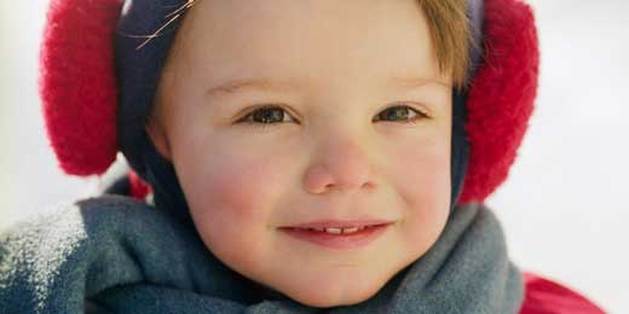
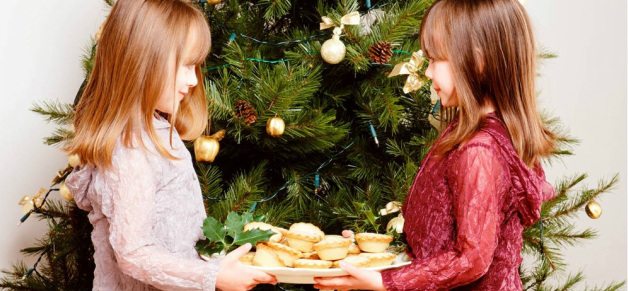
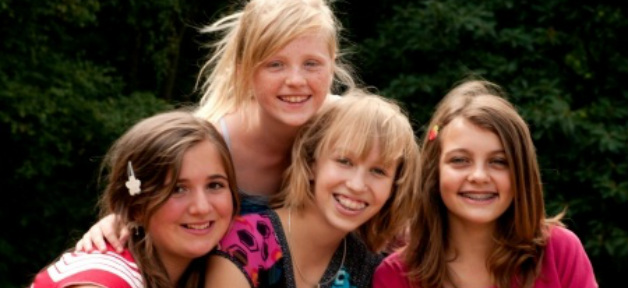

 RSS Feed
RSS Feed
